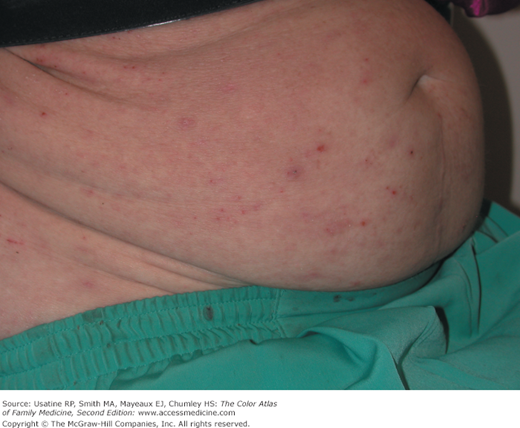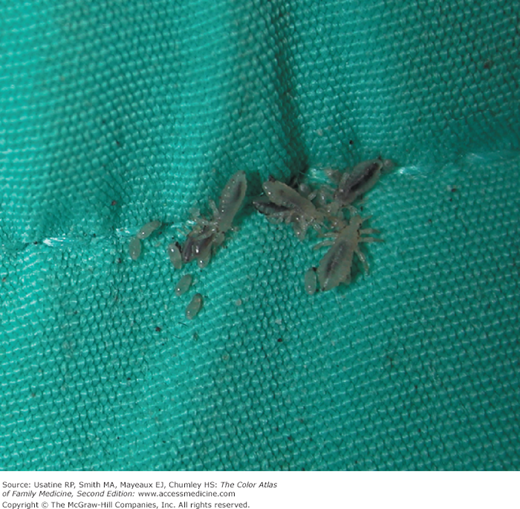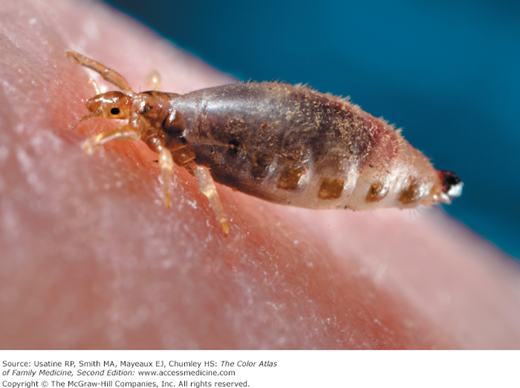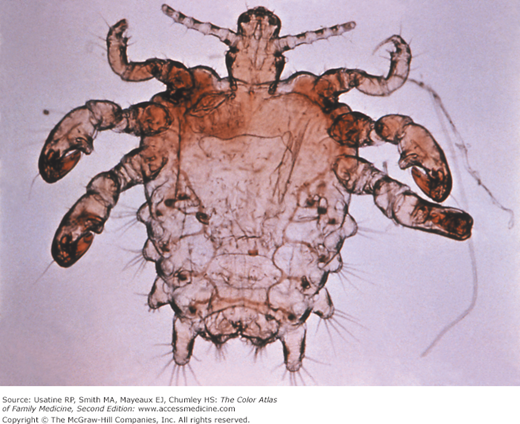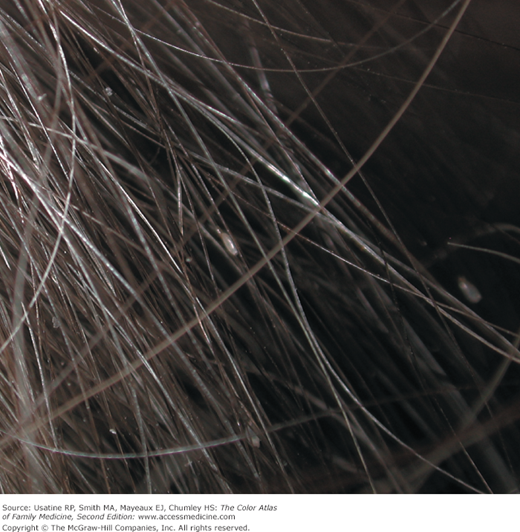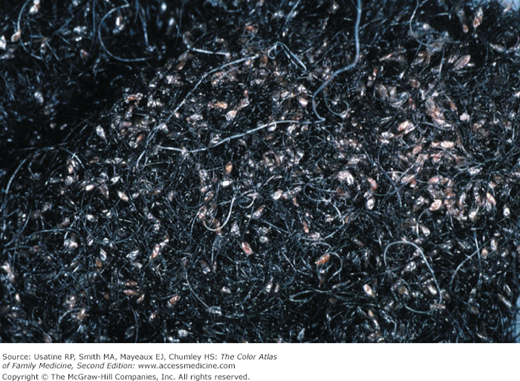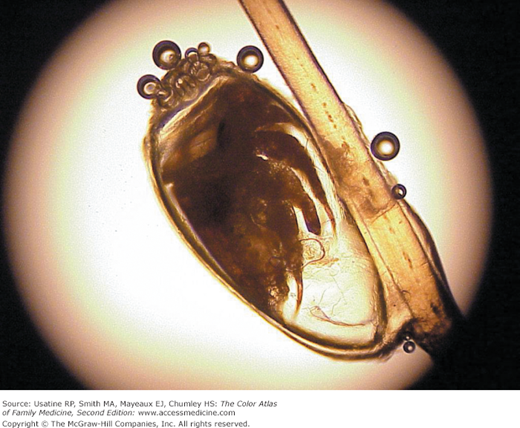Patient Story
A 64-year-old homeless woman with schizophrenia presented to a homeless clinic for itching all over her body. She stated that she could see creatures feed on her and move in and out of her skin. The physical examination revealed that she was unwashed and had multiple excoriations over her body (Figure 142-1). Body lice and their progeny were visible along the seams of her pants (Figure 142-2). Treatment of this lousy infestation required giving her new clothes and a shower.1
Figure 142-2
Adult body lice and nymphs visible along the pant seams of the woman in Figure 142-1. (Courtesy of Richard P. Usatine, MD.)
Introduction
Epidemiology
- Human lice (pediculosis corporis, pediculosis pubis, and pediculosis capitis) are found in all countries and climates.3
- Head lice are most common among school-age children. Each year, approximately 6 to 12 million children, ages 3 to 12 years, are infested.4
- Head lice infestation is seen across all socioeconomic groups and is not a sign of poor hygiene.5
- In the United States, black children are affected less often as a result of their oval-shaped hair shafts that are difficult for lice to grasp.4
- Body lice infest the seams of clothing (Figure 142-2) and bed linen. Infestations are associated with poor hygiene and conditions of crowding.
- Pubic lice are most common in sexually active adolescents and adults. Young children with pubic lice typically have infestations of the eyelashes. Although infestations in this age group may be an indication of sexual abuse, children generally acquire the crab lice from their parents.6
Etiology and Pathophysiology
- Lice are parasites that have six legs with terminal claws that enable them to attach to hair and clothing. There are three types of lice responsible for human infestation. All three kinds of lice must feed daily on human blood and can only survive 1 to 2 days away from the host. The three types of lice are as follows:
- Head lice (Pediculus humanus capitis)—Measure 2 to 4 mm in length (Figure 142-3).
- Body lice (Pediculus humanus corporis)—Body lice similarly measure 2 to 4 mm in length (Figure 142-4).
- Pubic or crab lice (Phthirus pubis)—Pubic lice are shorter, with a broader body and have an average length of 1 to 2 mm (Figure 142-5).
- Head lice (Pediculus humanus capitis)—Measure 2 to 4 mm in length (Figure 142-3).
- Female lice have a lifespan of approximately 30 days and can lay approximately 10 eggs (nits) a day.4
- Nits are firmly attached to the hair shaft or clothing seams by a glue-like substance produced by the louse (Figures 142-6, 142-7, 142-8).
- Nits are incubated by the host’s body heat.
- The incubation period from laying eggs to hatching of the first nymph is 7 to 14 days.
- Mature adult lice capable of reproducing appear 2 to 3 weeks later.5
- Transmission of head lice occurs through direct contact with the hair of infested individuals. The role of fomites (e.g., hats, combs, brushes) in transmission is negligible.6 Head lice do not serve as vectors for transmission of disease among humans.
- Transmission of body lice occurs through direct human contact or contact with infested material. Unlike head lice, body lice are well-recognized vectors for transmission of the pathogens responsible for epidemic typhus, trench fever, and relapsing fever.5
- Pubic or crab lice are transmitted primarily through sexual contact. In addition to pubic hair (Figure 142-9), infestations of eyelashes, eyebrows, beard, upper thighs, abdominal, and axillary hairs may also occur.
